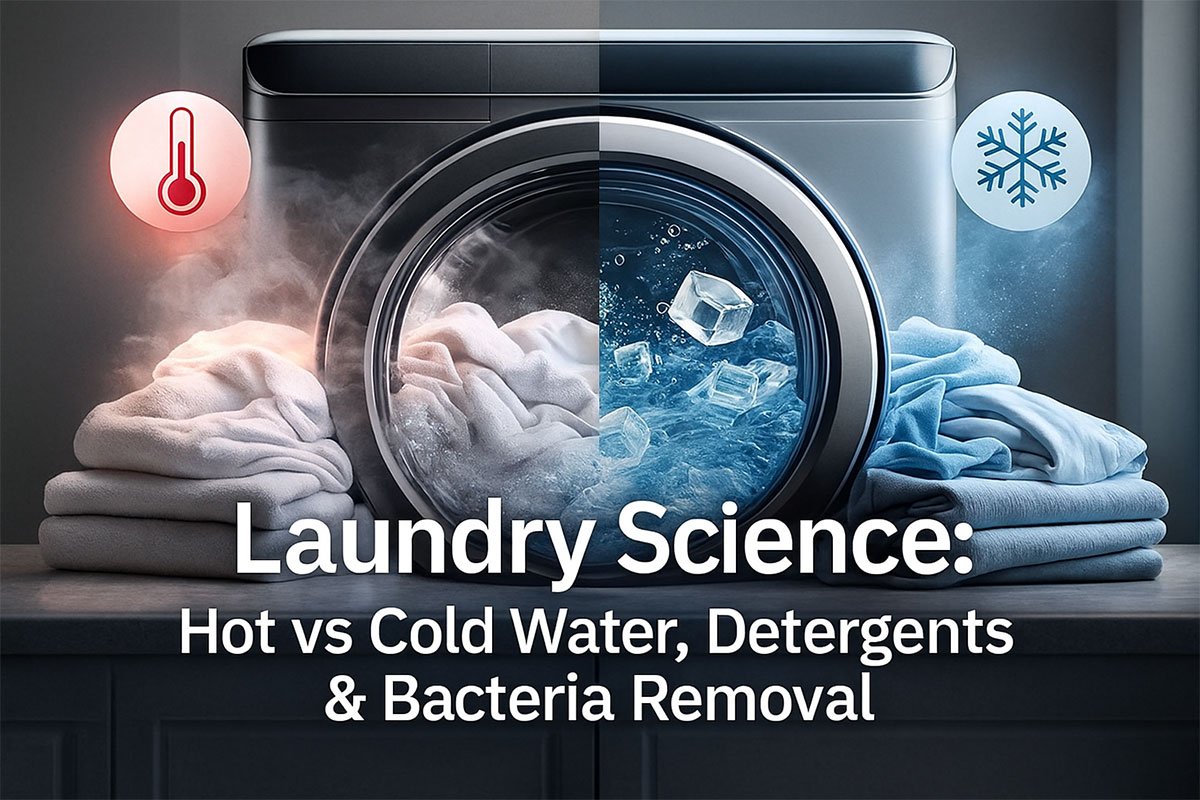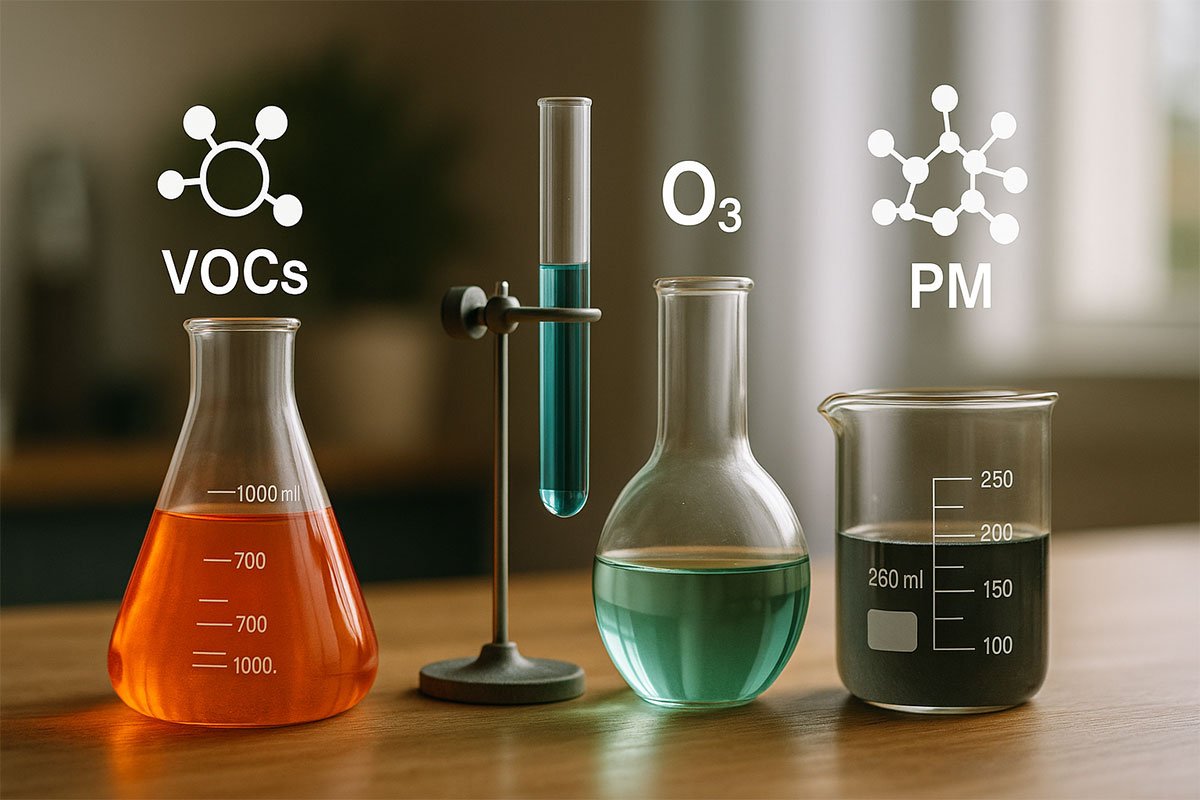Laundry may feel like a simple household routine, but the science behind how fabrics get clean—and how bacteria, oils, sweat, and dirt are removed—is surprisingly complex. Most homeowners choose wash temperatures and detergents based on habit, not scientific evidence. However, studies from environmental health agencies, microbiologists, and textile researchers show that water temperature plays a major role in how effectively laundry removes pathogens, allergens, and chemical residues. Depending on the fabric type, soil level, and the microorganisms present, washing in hot water may sometimes be essential, while in other situations cold water offers nearly identical results with lower energy costs and reduced fabric wear.
The effectiveness of washing depends on three main factors: mechanical action (agitation), chemical action (detergent), and thermal action (temperature). When all three are balanced properly, laundry removes dirt, oils, skin cells, bacteria, allergens, and odors effectively. But when one factor is weakened—such as using water that is too cold or insufficient detergent—cleaning performance drops. Dirt particles may remain embedded in fibers, bacteria may survive the wash cycle, and odors may persist even after drying. Understanding the interplay of these variables is the key to choosing the right settings for a particular load.
In recent years, many detergent manufacturers have produced formulations optimized for cold water to reduce energy consumption and protect fabrics. While these innovations are beneficial, they do not change the fundamental truth that certain microorganisms require high water temperatures to be effectively killed. Cold water may clean visually, but it does not guarantee disinfection. For heavily soiled laundry, bedding, towels, or items used by sick individuals, hot water remains the gold standard for reducing bacterial load. On the other hand, for everyday clothing, delicates, or lightly worn garments, cold water provides excellent results and reduces the risk of shrinkage, dye transfer, or fabric damage.
The science of laundry becomes even more important when one considers how many contaminants accumulate in fabrics daily. Clothing fibers trap sweat, oils, environmental pollutants, dust mites, dead skin cells, bacteria from soil or surfaces, and residues from personal-care products. Bedsheets accumulate the same contaminants along with additional allergens, pollen, and microscopic debris. Towels accumulate moisture-loving bacteria due to repeated dampness. Understanding water temperature’s role in removing or killing these contaminants empowers homeowners to choose washing practices that promote hygiene, fabric longevity, and energy efficiency.
To break down the differences between water temperatures, the following list summarizes the scientific performance of hot, warm, and cold water.
Water Temperature Comparison: What Works Best?
- Cold water (60–80°F / 15–27°C)
- Ideal for everyday clothing, delicates, and dark fabrics
- Prevents shrinkage and fading
- Uses far less energy
- Less effective at killing bacteria, viruses, and dust mites
- Works best with modern cold-water detergents
- Warm water (90–110°F / 32–43°C)
- Good all-purpose option
- Removes body oils better than cold
- More effective at dissolving detergent
- Moderate impact on fabric wear
- Hot water (120–140°F / 49–60°C+)
- Best for eliminating bacteria, viruses, and allergens
- Essential for towels, bedding, underwear, cleaning cloths, and sick laundry
- Can shrink or fade fabrics
- Uses significantly more energy
The challenge for many households is that modern water heaters are often set below the temperatures proven to kill harmful microorganisms. The CDC recommends washing items used by sick individuals in water 150°F (65°C) or hotter, yet many home water heaters are set between 120–130°F for safety and energy reasons. This means the washing machine may never reach temperatures high enough to disinfect effectively without using a sanitize cycle. Sanitize cycles—available in newer washers—use internal heaters to raise water temperature to the appropriate level, making them an excellent choice for bedding or heavily soiled loads.
Laundry detergents play an equally important role. Modern detergents contain surfactants that lift oils and soil from fabric fibers, enzymes that break down organic stains, and builders that enhance cleaning performance in hard water. Enzyme-based detergents work most effectively at warm temperatures, typically between 90–110°F. In cold water, enzymes work more slowly, although formulations labeled “cold water” contain enzyme boosters designed to compensate for lower temperatures. Still, no detergent can fully compensate for the disinfecting power of heat.
The types of bacteria found in laundry have been well-studied. Clothing regularly contains Staphylococcus aureus, E. coli, Klebsiella, Pseudomonas, and various skin bacteria. Towels, gym clothes, and underwear accumulate especially high bacterial loads, because moisture provides an ideal environment for growth. Dust mites and their allergens can also accumulate in bedding and pillows, and these organisms require temperatures above 130°F (54°C) to be effectively killed. Cold or warm water may remove many of these contaminants physically, but will not necessarily kill them, allowing regrowth once fabrics remain damp.
Beyond temperature and detergent chemistry, washing machine design impacts cleaning effectiveness. Front-loading washers typically clean better using less water due to increased mechanical action. Top-loaders with agitators rely more heavily on water volume, making detergent concentration critical. Newer machines with built-in heaters offer more consistent temperatures, while older machines rely entirely on the home’s water heater.
To help homeowners decide when hot water is necessary and when cold water is sufficient, the following list provides evidence-based recommendations:
When to Use Hot Water
- Towels and washcloths: Reduce bacteria and odor-causing microorganisms
- Bedding and sheets: Kill dust mites and remove body oils
- Underwear, socks, and gym wear: High exposure to sweat and bacteria
- Cloth diapers or reusable cleaning cloths: Require disinfection
- Items used during illness: Kill viruses and reduce reinfection risk
- Heavily soiled or greasy items: Improved breakdown of oils and fats
When Cold Water Is Acceptable
- Everyday clothing: Jeans, shirts, sweaters, casual wear
- Delicate fabrics: Silk, wool, lace, and items prone to shrinking
- Dark or color-rich fabrics: Reduce dye bleeding and fading
- Lightly worn items: Minimal soil or sweat accumulation
- Synthetics: Cold water preserves elasticity and prevents heat damage
Cold water is also highly effective for modern stain-treatment detergents, which are increasingly engineered to dissolve fully at low temperatures. Because household energy consumption for laundry is largely determined by water heating, washing in cold water can reduce energy use by up to 50–80% depending on the machine. This makes cold water the most environmentally friendly option for routine laundry.
However, to maximize cold-water cleaning performance, homeowners should follow several best practices. Using the appropriate detergent, choosing longer wash cycles, pre-treating stains, and avoiding overloading the washer all improve results. Cold water can fully clean laundry when detergent chemistry, agitation, and cycle length work together effectively.
One often overlooked component of laundry hygiene is the drying process. Dryers reach temperatures between 125–135°F, which can kill many remaining microorganisms and dust mites—if fabrics remain in the dryer long enough. Air drying, while gentler on fabrics, does not kill bacteria unless drying occurs in direct sunlight. UV exposure provides mild antimicrobial benefits, but shade drying does not.
Another factor is washing machine hygiene itself. Studies show that washers, especially front-loaders, can harbor mold, mildew, and bacterial biofilms in their rubber seals and detergent compartments. If washing machine odors are present, running a monthly maintenance cycle with hot water and a cleaning agent helps restore machine hygiene and prevents contaminants from spreading to clothing.
Laundry mistakes can also compromise hygiene. Overloading prevents proper agitation. Using too little detergent reduces cleaning performance, while using too much detergent can leave residue that traps bacteria. Mixing towels with delicate clothing can transfer bacteria between loads. Understanding these issues allows homeowners to optimize washing performance using science-based methods.
In the end, laundry science reveals that the best washing method depends on the purpose of the load. For true disinfection—towels, bedding, sick laundry, gym gear—hot water or sanitize cycles are necessary. For visual cleaning, odor removal, and routine weekly loads, cold water with a quality detergent is more than sufficient. Warm water strikes a middle ground for families with sensitive skin or heavy daily use items.
By choosing wash temperatures based on scientific evidence, homeowners can extend fabric lifespan, protect colors, save energy, and maintain higher levels of cleanliness. Understanding the chemistry of detergents, the biology of bacteria, and the physics of water temperature transforms laundry from a routine chore into a targeted, hygienic system that supports whole-home health.
Scientific Sources
- Centers for Disease Control and Prevention (CDC) – “Cleaning, Disinfecting & Laundry Guidance”
https://www.cdc.gov/hygiene - National Institutes of Health – Laundry Hygiene & Bacterial Contamination Studies
https://pubmed.ncbi.nlm.nih.gov - International Scientific Forum on Home Hygiene (IFH) – Fabric & Laundry Hygiene Research
https://www.ifh-homehygiene.org




